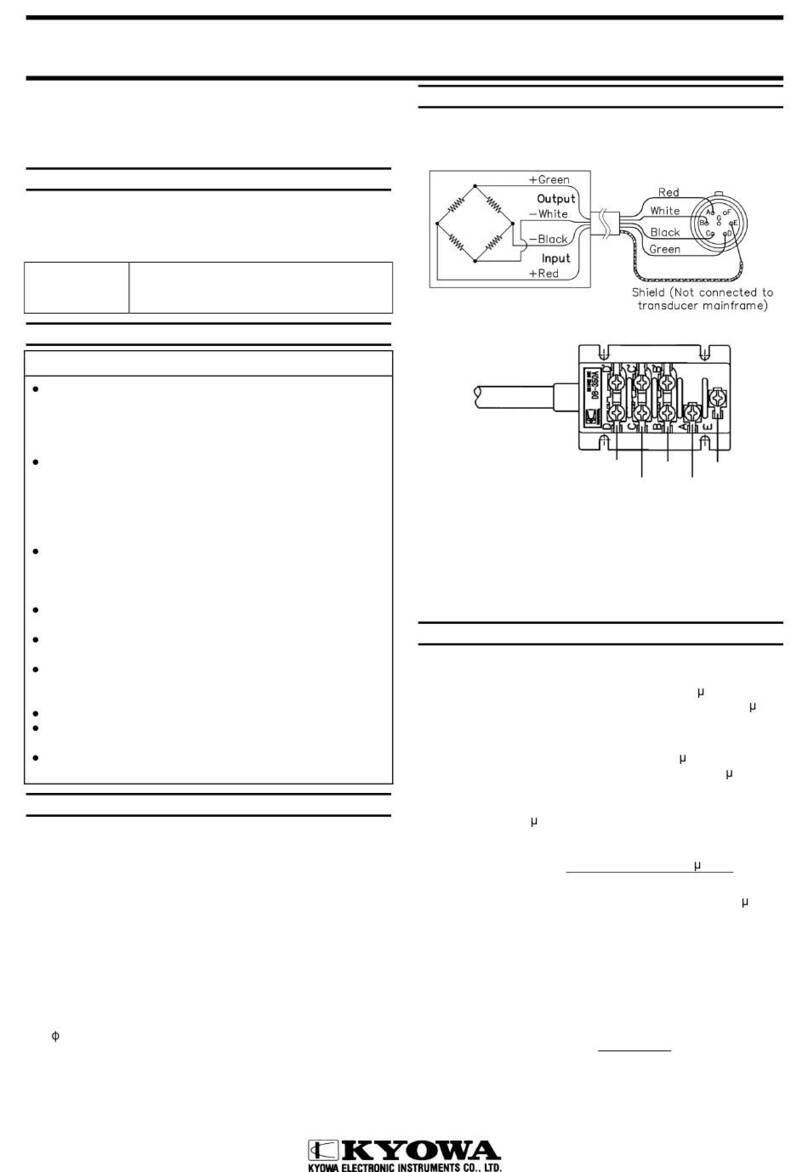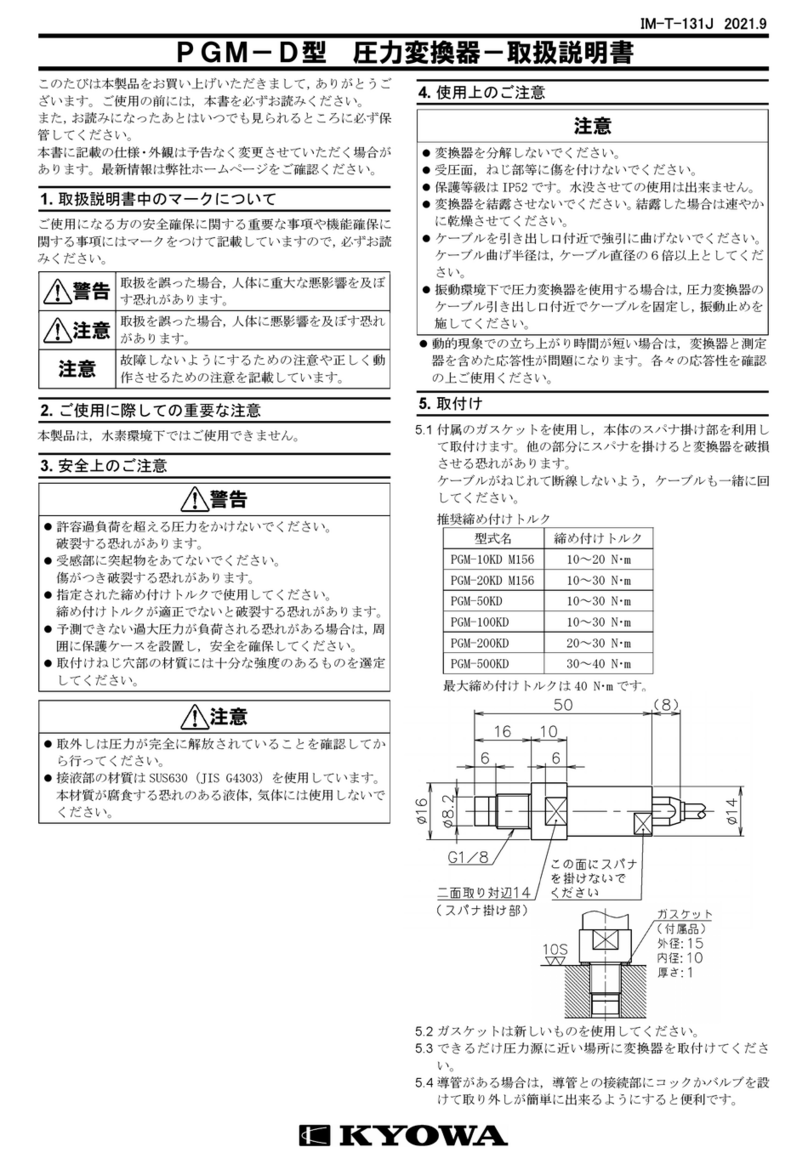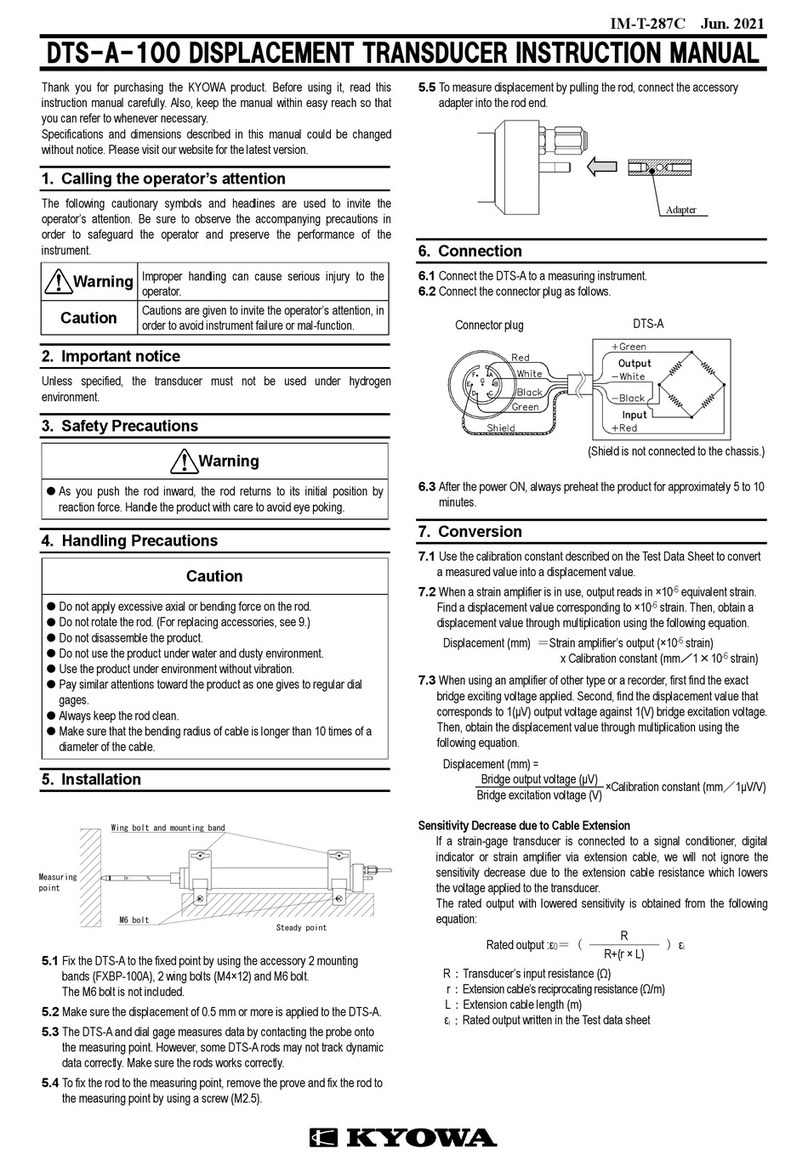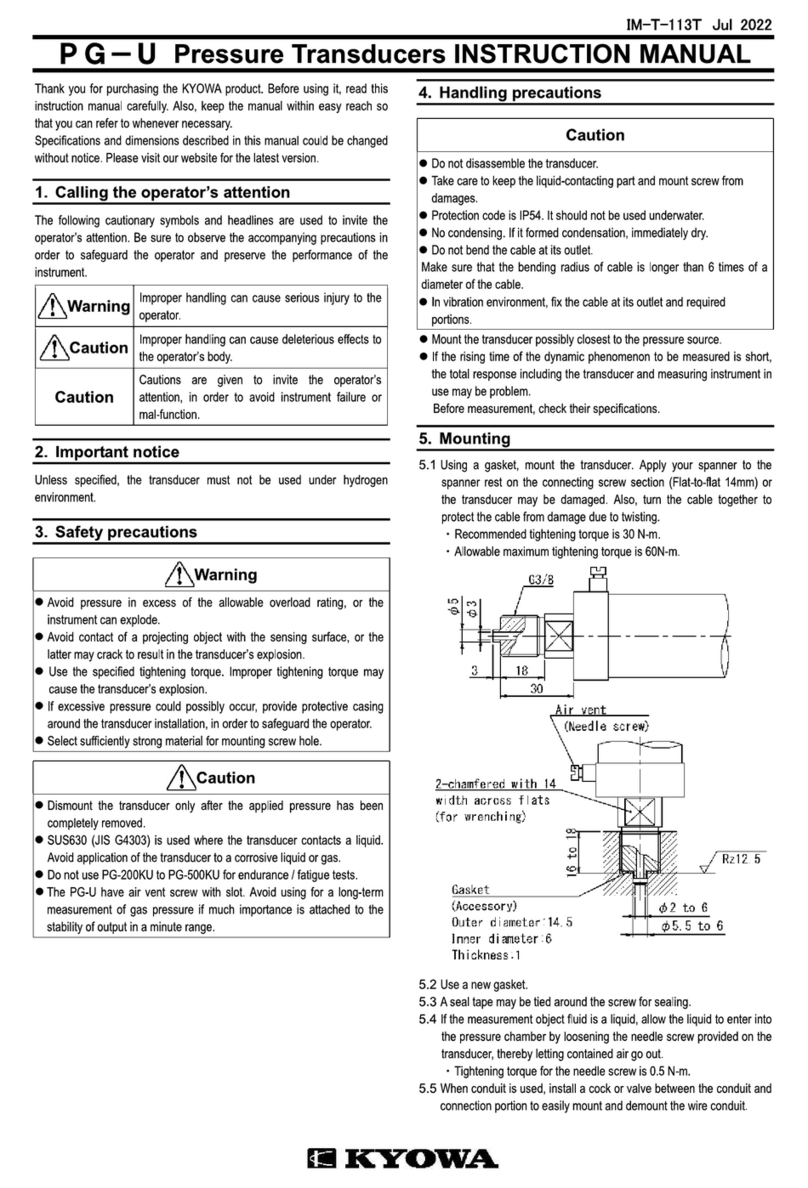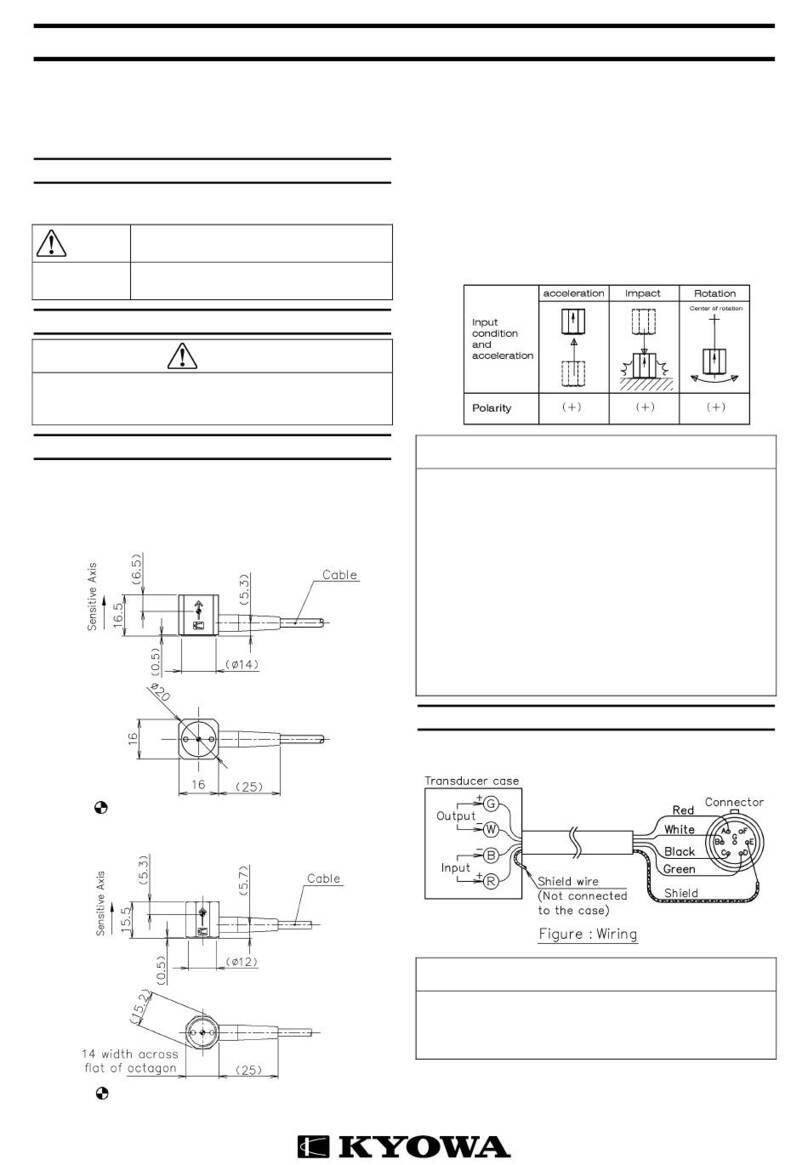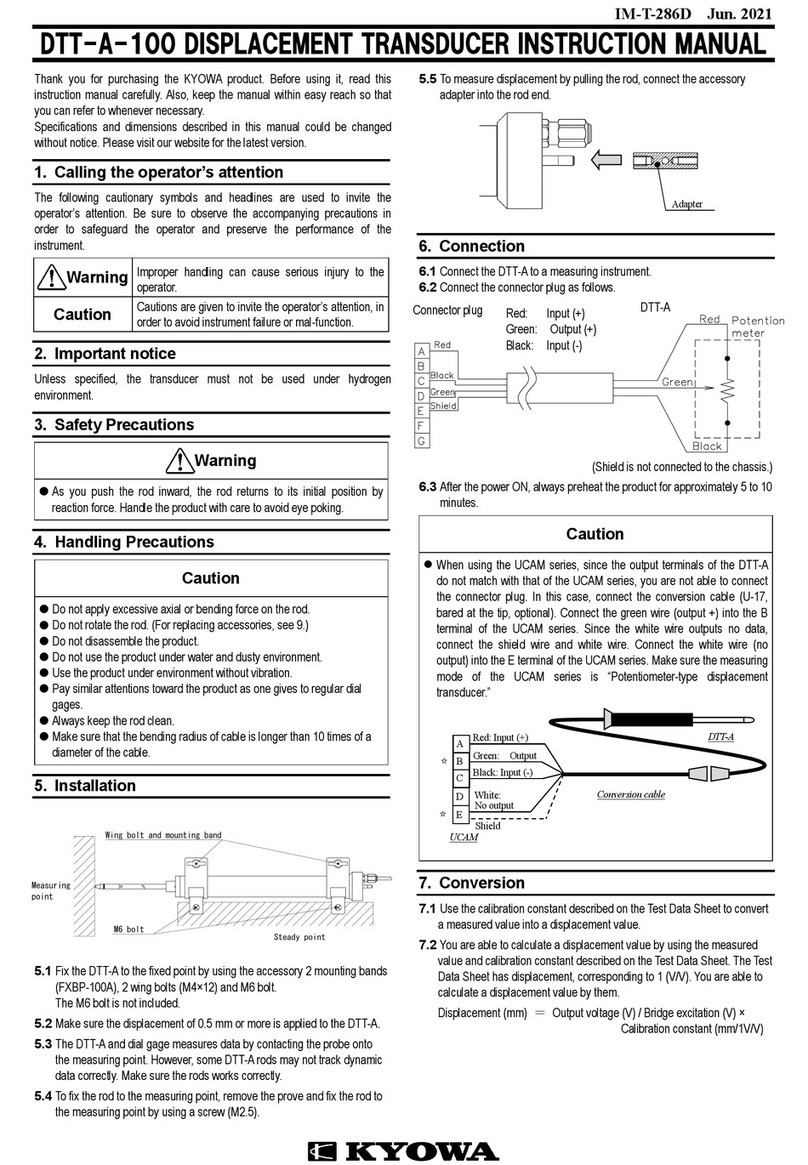
URL http://www.kyowa-ei.com
7.
Conversion
7.1 Use the calibration constant described in the test data sheet to
convert a reading into a pressure value.
7.2 When a strain amplifier is in use, output reads in ×10
-6
equivalent strain. Find a pressure value corresponding to ×10
-6
strain. Then, obtain a pressure value through multiplication
using the following equation.
Pressure (Pa) = Strain amplifier’s output (×10
-6
strain)
x Calibration constant (Pa
/
1×10
-6
strain)
7.3 When using an amplifier of other type or a recorder, first find the
exact bridge exciting voltage applied. Second, find the pressure
value that corresponds to 1(μV) output voltage against 1(V)
bridge excitation voltage. Then, obtain the pressure value
through multiplication using the following equation.
Pressure (Pa) =
Bridge output voltage (μV) ×Calibration constant (Pa
/
1μV/V)
Bridge excitation voltage (V)
Sensitivity Decrease due to Cable Extension
If a strain-gage transducer is connected to a signal conditioner,
digital indicator or strain amplifier via extension cable, we will not
ignore the sensitivity decrease due to the extension cable
resistance which lowers the voltage applied to the transducer.
The rated output with lowered sensitivity is obtained from the
following equation:
Rated output :ε
0
=(
R
)
ε
i
R+(r × L)
R
:
Transducer’s input resistance (Ω)
r
:
Extension cable’s reciprocating resistance (Ω/m)
L
:
Extension cable length (m)
ε
i
:
Rated output written in the Test data sheet
8.
Storage and inspection
8.1 Avoid water, oil, dust, etc. on the connector.
8.2 Recommend calibrate the product once a year or so. (Contact
your KYOWA representative.)
8.3 If suspicious outputs have occurred, check the input resistance,
output resistance and insulation resistance. Provided that the
connector operates properly and that the insulation resistance
between the mainframe and conductors is below 100M
Ω
, the
cause may be failure.
In this case, contact your KYOWA representative.
Caution
For measurement of insulation resistance, apply voltage
25V to the insulation resistance tester.
9.
Specifications
Model Rated Capacity Natural Frequency
(Approx. )
PHF-S-2MPSA4 2MPa 110 kHz
PHF-S-5MPSA4 5MPa 120 kHz
PHF-S-10MPSA4 10MPa 170 kHz
◆
Performance
Rated Capacity See table above.
Nonlinearity Within±0.3%RO
Hysteresis Within±0.2%RO
Rated Output Approx. 0.5mV/V
◆
Environmental Characteristics
Safe Temperature 40 to 170
℃
(R04-P5M and R04-J5F connector
plug: -40 to 100
℃
,
PRC03-12A10-7M connector plug:
-25 to 85
℃
)
Compensated Temperature 40 to 150
℃
(R04-P5M and R04-J5F connector
plug: -40 to 100
℃
,
PRC03-12A10-7M connector plug:
-25 to 85
℃
)
Temperature Effect on Zero Within ±0.05% RO/
℃
Temperature Effect on Output Within ±0.05%/
℃
◆
Electrical Characteristics
Safe Excitation 5 V AC or DC
Recommended Excitation 1 to 2 V AC or DC
Input Resistance 350 ±5%
Output Resistance 350 ±5%
Cable 4-conductor (0.09mm
2
) fluoroplastic
shielded cable, 3.1mm diameter by
50cm long, terminated in connector
plug R04-P5M
(Shield wire is not connected to the
mainframe.)
Accessory cable 4-conductor (0.09mm
2
) fluoroplastic
shielded cable, 3.1mm diameter by
4m long, terminated in connector
plugs
Sensor side: R04-J5F
Measuring instrument side:
PRC03-12A10-7M
◆
Mechanical Properties
Safe Overloads 150%
Natural Frequencies See table above.
Material Case: Stainless steel
Liquid-contacting part: SUS630
Weight Approx. 20g (Excluding cable)
Degree of protection IP63 (IEC 60529)
*When connecting the accessory
cable, (Excluding the measuring
instrument side connector
PRC03-12A10-7M)
Mounting Screw 5/16-24UNF, male
◆
Accessories
“O” ring (AS568 010) 2
Accessory cable 1
Test Data Sheet 1
Instruction manual 1 (This book)

